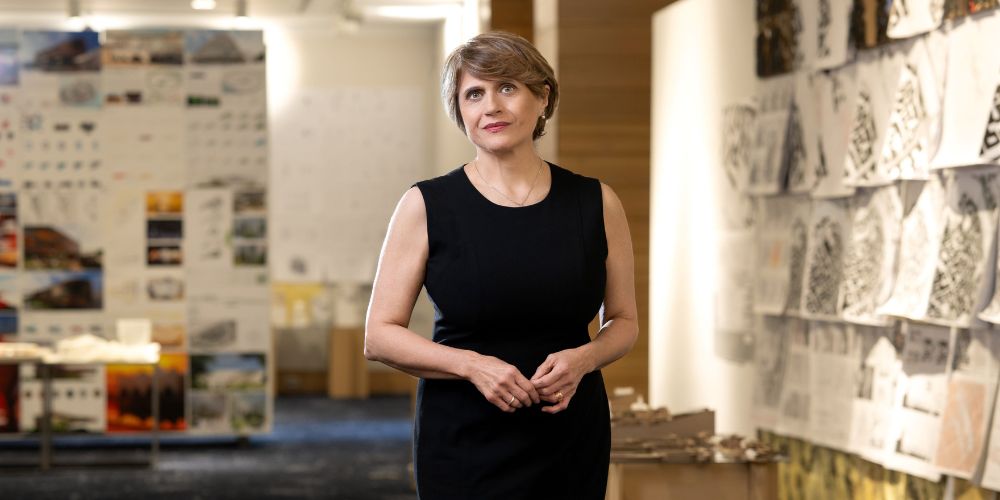A project to 3D print homes from cork and concrete

University of Texas at Arlington architecture Professor Shadi Nazarian is a member of an interdisciplinary team exploring the viability of 3D-printing homes in rural Alaska to provide affordable, sustainable and resilient housing.
Nazarian and the team, led by Pennsylvania State University and José Pinto Duarte, Stuckeman Chair in Design Innovation and director of the Stuckeman Center for Design Computing at Penn State, plan to print these homes using an innovative mix of cork and concrete, a unique approach tailored for the frozen grounds in Alaska that makes the structure lightweight and provides excellent insulation. Such innovation will allow the homes to be built quickly and drive down the cost and labor needed. Her eventual goal is to develop seamless transitional material that can print at a large scale, making housing more energy efficient, affordable and accessible in remote areas.
“Part of the goal is to think about how to build quickly and well enough for people to be safe and healthy, as the number of people living on Earth will dramatically increase in the next 20 years,” said Nazarian, the inaugural H. Ralph Hawkins, FAIA, Chair in Architecture.
This technology could eventually be used to address affordable housing issues in the Dallas-Fort Worth Metroplex, where housing prices continue to rise.
“Advancing construction technology and developing 3D printing is a necessity because it enables us to achieve the goals of providing housing much faster, safer and stronger,” she said.
The Alaska project started at the behest of Xtreme Habitat Institute (XHI), an Alaska-based nonprofit corporation that approached Nazarian and the team after their successful participation in the NASA 3D-Printed Habitat Challenge Competition. The competition’s goals were to catalyze adoption of additive construction technology and develop deployable printing systems that utilized indigenous materials.
Nazarian and the team won many awards and was the only one in the final stage of competition with an all-university roster of faculty and students. They created the world’s first fully enclosed 3D-printed concrete structure without relying on any support structure or formwork during construction.
The Alaska project is funded in part by a $1.6 million matching grant program supported by the U.S. Department of Housing and Urban Development, the Denali Commission, the Alaska Housing Finance Corporation and the Rasmuson Foundation. Some of these funds were issued to the remote city of Nome, Alaska, which commissioned XHI to conduct research, testing and demonstration of 3D concrete printing technologies.
XHI is teaming up on the project with X-Hab 3D, a robotic additive concrete manufacturing company Nazarian cofounded that offers printing systems, materials, and designs. Other collaborators include Sven Bilén, Penn State professor and X-Hab 3D cofounder; Nate Watson, X-Hab 3D vice president of engineering and product; and Duarte, Penn State professor and X-Hab 3D cofounder. Penn State professors Ali Memari and Aleksandra Radlińsk, their respective doctoral students, and the Cold Climate Housing Research Center at the National Renewable Energy Laboratory will also work on the project.
Nazarian joined UTA last fall and will lead broadened initiatives in sustainable material and fabrication research, as well as continuing her research in sustainable concrete materials, for the College of Architecture, Planning and Public Affairs.